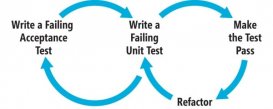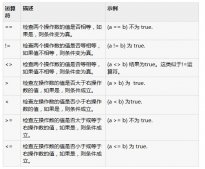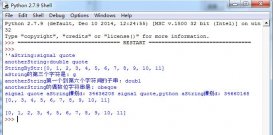本文实例为大家分享了Python Opencv实现图片的切割处理,供大家参考,具体内容如下
Opencv对图片的切割:
方法一:
|
1
2
3
4
5
6
7
8
9
10
11
12
13
14
15
16
17
18
19
20
21
22
23
24
25
26
27
28
29
30
31
32
33
34
35
36
37
38
39
40
41
42
43
44
|
import osfrom PIL import Imagedef splitimage(src, rownum, colnum, dstpath): img = Image.open(src) w, h = img.size if rownum <= h and colnum <= w: print('Original image info: %sx%s, %s, %s' % (w, h, img.format, img.mode)) print('开始处理图片切割, 请稍候...') s = os.path.split(src) if dstpath == '': dstpath = s[0] fn = s[1].split('.') basename = fn[0] ext = fn[-1] num = 0 rowheight = h // rownum colwidth = w // colnum for r in range(rownum): for c in range(colnum): box = (c * colwidth, r * rowheight, (c + 1) * colwidth, (r + 1) * rowheight) img.crop(box).save(os.path.join(dstpath, basename + '_' + str(num) + '.' + ext), ext) num = num + 1 print('图片切割完毕,共生成 %s 张小图片。' % num) else: print('不合法的行列切割参数!')src = input('请输入图片文件路径:')if os.path.isfile(src): dstpath = input('请输入图片输出目录(不输入路径则表示使用源图片所在目录):') if (dstpath == '') or os.path.exists(dstpath): row = int(input('请输入切割行数:')) col = int(input('请输入切割列数:')) if row > 0 and col > 0: splitimage(src, row, col, dstpath) else: print('无效的行列切割参数!') else: print('图片输出目录 %s 不存在!' % dstpath)else: print('图片文件 %s 不存在!' % src) |
方法二:
|
1
2
3
4
5
6
7
8
9
10
11
12
13
14
15
16
17
18
19
20
21
22
23
24
25
26
27
28
29
30
31
32
33
34
35
36
37
38
39
40
41
42
43
44
45
46
47
48
49
50
51
52
53
54
55
56
57
58
59
60
61
62
63
64
65
66
67
68
69
70
71
72
73
74
75
76
77
78
79
80
81
82
83
84
85
86
87
88
89
|
# coding=utf-8import numpy as npimport cv2from PIL import Imageimage = cv2.imread("../staticimg/oldimg_04.jpg")b = np.array([[0,248], [512,254], [512,512],[0,512]], dtype = np.int32)c = np.array([[0,0], [512,0], [512,254],[0,248]], dtype = np.int32)roi_t = []roi_c = []for i in range(4): roi_t.append(b[i]) roi_c.append(c[i])roi_t = np.asarray(roi_t)roi_t = np.expand_dims(roi_t, axis=0)im = np.zeros(image.shape[:2], dtype="uint8")cv2.polylines(im, roi_t, 1, 255)cv2.fillPoly(im, roi_t, 255)roi_c = np.asarray(roi_c)roi_c = np.expand_dims(roi_c, axis=0)imc = np.zeros(image.shape[:2], dtype="uint8")cv2.polylines(imc, roi_c, 1, 255)cv2.fillPoly(imc, roi_c, 255)mask = immaskc = imcmaskedtop = cv2.bitwise_and(image,image,mask=mask)maskedbody = cv2.bitwise_and(image,image,mask=maskc)imp = Image.fromarray(image)arraytop = np.zeros((maskedtop.shape[0], maskedtop.shape[1], 4), np.uint8)arraybody = np.zeros((maskedbody.shape[0], maskedbody.shape[1], 4), np.uint8)arraytop[:, :, 0:3] = maskedtoparraybody[:, :, 0:3] = maskedbodyarraytop[:, :, 3] = 0arraytop[:,:,3][np.where(arraytop[:,:,0]>2)]=255arraytop[:,:,3][np.where(arraytop[:,:,1]>2)]=255arraytop[:,:,3][np.where(arraytop[:,:,2]>2)]=255print(arraytop.max())image_1 = Image.fromarray(arraytop)image_1.save("666.jpg","PNG")arraybody[:, :, 3] = 0arraybody[:,:,3][np.where(arraybody[:,:,0]>2)]=255arraybody[:,:,3][np.where(arraybody[:,:,1]>2)]=255arraybody[:,:,3][np.where(arraybody[:,:,2]>2)]=255print(arraybody.max())image_2 = Image.fromarray(arraybody)image_2.save("888.jpg","PNG")# cv2.imwrite("333.jpg",maskedtop)# cv2.imwrite("222.jpg",maskedbody)# ---------------------# def cut_img(image, array_points,array_points2):# b = np.array(array_points, dtype=np.int32)# c = np.array(array_points2, dtype=np.int32)## roi_t = []# roi_c = []# for i in range(2):# roi_t.append(b[i])# roi_c.append(c[i])## roi_t = np.asarray(roi_t)# roi_t = np.expand_dims(roi_t, axis=0)# im = np.zeros(image.shape[:2], dtype="uint8")# cv2.polylines(im, roi_t, 1, 255)# cv2.fillPoly(im, roi_t, 255)## roi_c = np.asarray(roi_c)# roi_c = np.expand_dims(roi_c, axis=0)# imc = np.zeros(image.shape[:2], dtype="uint8")# cv2.polylines(imc, roi_c, 1, 255)# cv2.fillPoly(imc, roi_c, 255)# mask = im# maskc = imc# kk = cv2.bitwise_and(image,image,mask=mask)# kkc = cv2.bitwise_and(image,image,mask=maskc)# cv2.imwrite("333.jpg",kk)# cv2.imwrite("222.jpg",kkc)# return cv2.bitwise_and(image, image, mask=mask) |
以上就是本文的全部内容,希望对大家的学习有所帮助,也希望大家多多支持服务器之家。
原文链接:https://blog.csdn.net/weixin_43431189/article/details/93511316












